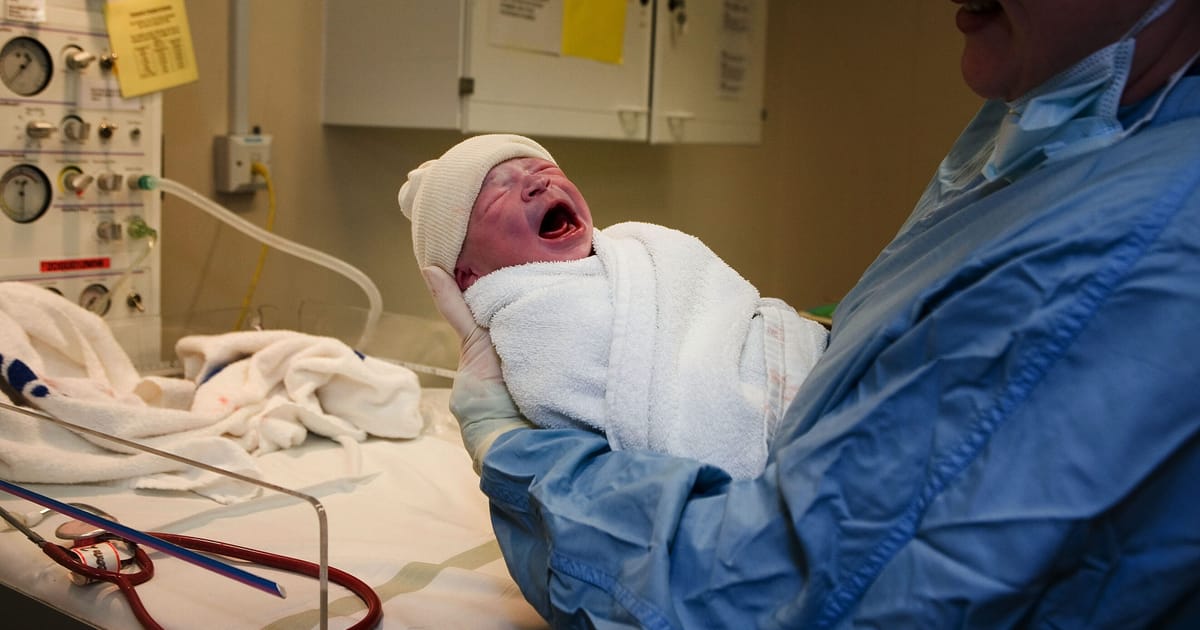Can a baby-making conference in Budapest help Europe avoid demographic collapse? The populist right certainly hope so.
For decades, Europe’s birth rates have been below the replacement level of 2.1 — the average number of births per woman needed to keep the population stable without immigration. But recently the threat of global demographic collapse has also become a cause célèbre in Silicon Valley. Elon Musk, who has 9 children, has called demographic decline “a much bigger risk to civilization than global warming.”
In Europe, the political push to drive up birth rates has been led by Hungary’s Viktor Orbán. And this week his populist government is hosting a grab bag of rightwing crowd-pleasers at the 5th Budapest Demographic Summit.
Starting Thursday, political leaders, religious evangelists and high-profile academics — including conservative Canadian psychologist Jordan Peterson, Italy’s right-wing Prime Minister Giorgia Meloni, Serbian President Aleksandar Vučić and Bulgarian President Rumen Radev — will meet for two days to discuss exactly how to get Europeans to make more babies.
It’s a thorny topic. Surveys show both men and women in Europe wish they had more children than they actually do. A rapidly aging population can also put strain on the pension system. At the same time, talk of policies to help women have more children have uncomfortable echoes of Handmaid’s Tale-style dystopia.
Meanwhile, Orbán previously caused a scandal when he said that low birth rates and immigration were leading Europe to civilizational suicide, in a nod to the far-right “Great Replacement” theory that white populations are set to be replaced by non-white people.
One way or another, summit participants will have plenty to discuss — not least because everything they’ve tried so far hasn’t really worked.
Visegrád’s cash for kids
Hungary leads the way when it comes to pouring money into pro-natalist policies. The government spends around 5 percent of its national GDP trying to prop up the birth rate.
First there are tax breaks: women who have four or more children have a lifetime exemption from paying tax. Then there are upfront loans of $36,000, which get written off for couples that have at least three children. First-time homebuyers with kids have financial help (€35,000). And there are even government-owned fertility clinics.
Orbán isn’t the only right-winger in the Visegrád group interested in encouraging procreation.
In 2016, Poland launched its 500 plus program. Parents receive around €120 per month for every child after their first. According to the European Commission, almost 4 million children up to the age of 18 — or 55 percent of all Polish children — were covered by the program by 2017.
Results are mixed at best. Hungary’s fertility rate has increased in the past decade, from when it was lowest in the EU at a dismal 1.2 births per woman. But at the current level of 1.6, it’s still far from self-sustaining. In Poland, there was an uptick in birth rates after the introduction of the 500 plus program, possibly tied to the policy, but it soon subsided. This year the birth rate reached the lowest level since World War II.
Rating:

Scandinavian social demography
If the Visegrád countries are focused on tax breaks and cash handouts, the Nordics have taken a different tack. These countries want to make it as easy as possible for women to have kids while continuing to have a career.
They’ve invested heavily in early-childhood education, so that children can be looked after while both parents work. Subsidized crèches with a cap on costs mean that in Sweden, families only pay 11 percent of the cost of a spot in a nursery, the lowest fees in the developed world. Across Sweden, Norway and Denmark, over half of kids under the age of two are enrolled in nurseries — well above the EU average of around 30 percent.
Parental leave is also generous, and structured to encourage fathers to take time off. In Sweden, both parents get eight months off. In Finland, parents get almost seven months, while in Denmark the parents get 52 weeks of paid leave collectively between them, which can be extended by taking a haircut on the parental allowance.
The takeaway? A decade ago, Sweden registered a fertility rate of 1.9, but since then it’s drifted down to 1.7, at the same level as Denmark. Finland meanwhile languishes at 1.5 children per woman.
Rating:

Mediterranean chill
It’s an ironic reversal, given the Catholic Church’s famous aversion to birth control (satirized by Monty Python): Europe’s South has the lowest birth rates on the continent. Italy records barely 1.3 births per woman, while Spain is even lower at 1.2.
It comes down to a few different things. Culturally, young adults move out of their parents’ home later in life, a trend aggravated by depressed economies and high rates of youth unemployment. That means that women have their first child later in life, on average at 31 years. The lack of a robust welfare state means that parents either have to rely on grandma and grandpa, or are on their own. A shortage of nurseries makes it difficult for families to balance work and childrearing.
Italy is going on a creche-building spree fuelled by its EU recovery funds, but it will take years to judge whether it will have any effect.
Rating:
Vive la France!
The language of love may just work — France is the number one country by fertility in the EU. At 1.8 it’s not yet at replacement level, but it’s the closest. To the point that by 2045, its population is expected to overtake Germany’s.
Like in other countries, France has a cash subsidy for families with children. Payments start at the second child, but actually more than double with the third child. This is in contrast with the U.K., where benefits are actually capped at two children. Families with three or more children also benefit from famille nombreuse (large family) status, which comes with benefits such as reduced train travel. Pension payout is also increased by 10 percent for parents with three or more children.
None of this is a stark departure from what other countries are doing, so this Gallic success remains something of a mystery. But if Orbán wants to crack the riddle of falling birthrates he’s better off taking a look at secular France rather than ultra-Catholic Poland.
Rating:







